Volatile Organic Compounds (VOCs) Testing Services
For over three decades, Pace® has provided a variety of testing services to determine the composition of Volatile Organic Compounds (VOCs). Due to their low water solubility and high vapor pressure, special preservation and extraction techniques must be used to minimize losses during analysis and sampling. Our state-of-the-art facilities and instrumentation enable us to streamline sample flow, resulting in high-quality, cost-effective services with quick turnaround times to meet your specific requirements and deadlines. Our VOC testing and analysis services include:
- Content of VOCs
- Identification of VOCs
- Analysis of aqueous and non-aqueous mixtures, including solids, soils, air, and water
- Purge and Trap Analysis
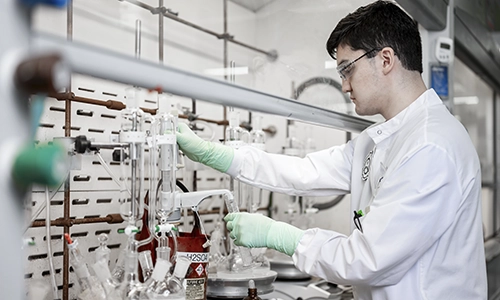
What Are Volatile Organic Compounds
VOCs are a group of chemicals with a high vapor pressure and low water solubility. VOCs can move easily through the environment. If improperly discarded, these chemicals can travel through the soil and eventually end up in groundwater.
In addition to contaminating soil and groundwater, VOCs can generate toxic vapors that move through soils, seep into buildings, and degrade indoor air quality, a process called vapor intrusion. Certain VOCs combine with other gases and sunlight to create tropospheric or ground-level ozone, contributing to air pollution and smog.
Sources Of Volatile Organic Compounds
VOCs are all around us. Many VOCs are synthetic chemicals used to manufacture a wide range of common products, including paints, pharmaceuticals, refrigerants, petroleum fuels, hydraulic fluids, paint thinners, and dry-cleaning agents. They may also be used in the manufacturing process as industrial solvents (e.g., trichloroethylene) or fuel oxygenates (e.g., methyl tert-butyl ether, or MTBE) and produced as a by-product of certain processes (e.g., the production of chloroform during water treatment).
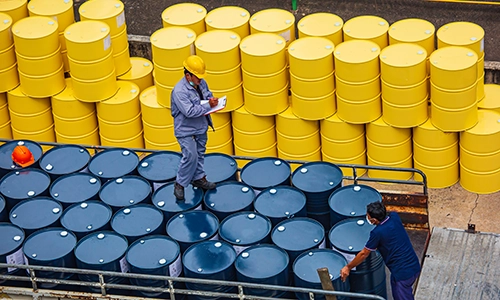
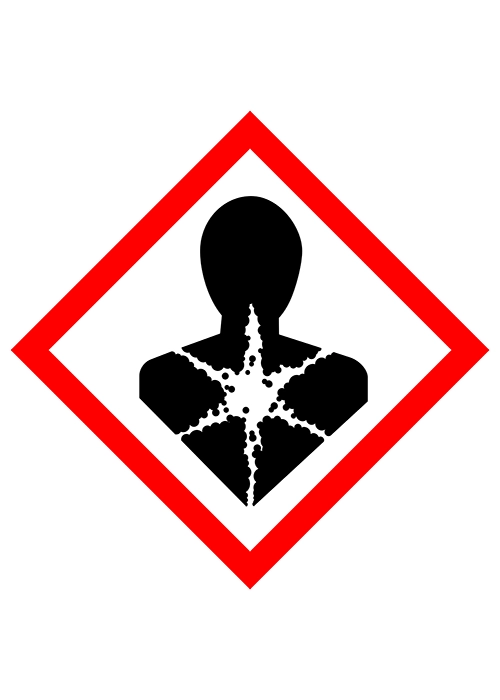
What Are The Health Impacts Of VOCs?
Various VOCs have the potential to cause harmful effects on human health, particularly when present indoors. The concentration of these compounds can be significantly higher (2-10X) indoors compared to outdoors, especially after construction or renovation projects. Since people spend more time indoors than out, indoor exposure has a greater impact on health.
Health effects of VOC exposure may include:
- Eye, nose, and throat irritation
- Nausea and vomiting
- Shortness of breath
- Nosebleeds
- Damage to liver, kidneys, and central nervous system
- Cancers (leukemia and lymphoma)
The Role Of Soils In VOC Contamination
Soils can act as both sources and sinks of VOCs, such as toluene and trichloroethene. These compounds are often the primary pollutants found in contaminated sites, making the quantitative determination of soil VOCs a crucial aspect of both site assessment and environmental restoration processes. Accurate measurement and analysis of soil VOCs is imperative to address and mitigate harmful environmental impacts effectively.

Pace® proprietary ezSoil® method simplifies VOC analysis by converging technology with custom equipment to improve quality while reducing turnaround.
- Reduced dilutions
- Fewer containers
- Reduced shipping weight
- Less time in the field
- Improved accuracy and precision in analysis
“The first day we went from 8AM-630PM…having only 1 vial for VOCs and 2 for TPH, was definitely a big help, otherwise we would have had to consider an extra day for drilling.”
Techniques For VOC Detection
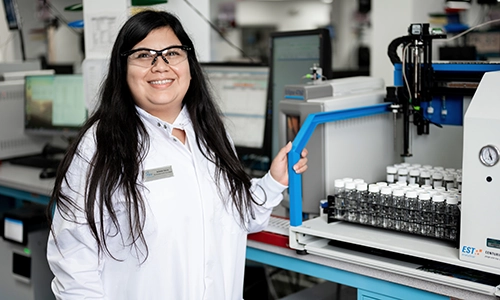
One of the most frequently utilized techniques for separating and analyzing mixtures consisting of volatile components is Gas Chromatography-Flame Ionization Detection (GC-FID). This method is highly effective in detecting and quantifying VOCs.
ECDs are commonly used in environmental testing to detect PCBs, organochlorine pesticides, herbicides, and other halogenated hydrocarbons. ECDs are up to 1000 times more sensitive than Flame Ionization Detectors and were the first detectors to measure components at parts-per-billion (ppb) and parts-per-trillion (ppt) levels.
GC–MS is an analytical technique that combines gas chromatography and mass spectrometry to identify different substances within a test sample. GC-MS can achieve high sensitivity, selectivity, accuracy, and reproducibility for the analysis of VOCs.
The purge and trap procedure involves purging a sample with an inert gas to volatilize the VOCs present in the sample. These volatilized compounds are then trapped onto an adsorbent material. Following the trapping process, the adsorbent material is heated, and the VOCs are released (desorbed) before being analyzed using gas chromatography or gas chromatography-mass spectrometry (GC-MS). The purge and trap method is designed to manage water vapor while simultaneously achieving low detection limits in the parts-per-billion range.
How Are Volatile Organics Regulated?
VOCs are covered by both state and federal regulations. Under the National Ambient Air Quality Standards, the U.S. Environmental Protection Agency (EPA) has defined VOCs as any substance that participates in atmospheric photochemical reactions. Simply stated, they are substances that react in the atmosphere, producing ozone, which contributes to the formation of smog. Industrial solvents are the primary source of VOC emissions, which are closely monitored to ensure compliance.
Many industries use VOCs as solvents and chemical intermediates. When VOCs leak or are a component of industrial waste, these organic contaminants can pollute soil and sediments. Because many VOCs have negative environmental effects and soil remediation can be expensive, it is crucial to accurately measure the extent of hazardous waste contamination to make informed decisions about cleanup efforts.
Enacted in 1976, RCRA governs the disposal of solid and hazardous waste. According to RCRA guidelines, waste is considered toxic if it contains any of the 40 hazardous constituents in concentrations equal to or greater than certain levels. These constituents include 10 VOCs.
CERCLA, commonly known as Superfund, gives the EPA broad authority to respond directly to releases or threatened releases of hazardous substances, including VOCs, that may endanger public health or the environment. Once a substance is designated hazardous under CERCLA, facilities will be required to report on releases that meet or exceed the reportable quantity assigned to these substances.
The Occupational Safety and Health Administration (OSHA) regulates formaldehyde, a specific VOC, as a carcinogen. OSHA has adopted a Permissible Exposure Level (PEL) of .75 ppm, and an action level of 0.5 ppm.
The EPA regulates VOCs at the federal level in 40 CFR 59, the National Volatile Organic Compound Emission Standards for Consumer and Commercial Products. VOC controls for products are typically based on the application of products, such as aerosol coatings, architectural coatings, automobile refinish coatings, etc.
States must adhere to Reasonably Available Control Technology, or RACT, which sets minimum standards for emissions control based on technical and economic factors.
While federal VOC limits are designed to maintain nationwide air quality for environmental and human health reasons, the Clean Air Act requires states to also take responsibility for maintaining air quality. Some states have implemented State Implementation Plans (SIPs) to address air pollution. Other states, such as Pennsylvania and California, have implemented even stricter regulations than the EPA requires on VOC limits. Additionally, some states have VOC regulations that vary from county to county or region to region.
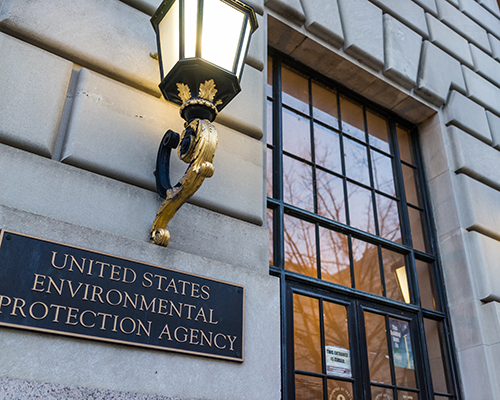
Who We Serve
VOC analysis is used to assess the extent of environmental contamination in a variety of matrices. Pace® offers several VOC testing methods, including ezSoil®, to support environmental and engineering projects. Our state-of-the-art facilities and instrumentation allow us to streamline sample flow, which means high-quality, cost-effective services with a quick turnaround.
VOCs from landfills can be emitted directly into the atmosphere or spread to surrounding areas in leachate plumes from open solid waste dumpsites. Pace® provides leachate VOC testing services for municipal, industrial, and private landfill operators.
The oil and natural gas industry includes a wide range of operations and equipment, from wells to natural gas gathering lines, processing facilities, storage tanks, and transmission and distribution pipelines. It is also one of the largest industrial sources of VOC emissions that contribute to the formation of ground-level ozone (smog).
VOCs and other Hazardous Air Pollutant (HAP) emissions can be produced during the chemical manufacturing process. These pollutants may be released into the environment through process vents, storage tank emissions or leaks, and unintentional (fugitive) releases.
The Clean Air Act (CAA) requires the EPA Administrator to issue Control Techniques Guidelines (CTG) for the control of VOC emissions from coatings and solvents used in the aerospace industry. Pace® offers a variety of VOC testing methods to support the CAA.
For years, a variety of dry-cleaning agents have been used, with the VOC tetrachloroethylene (PCE) being the most common. PCE can migrate through soil and accumulate in deeper zones, and in some cases, leach into groundwater. Pace® provides testing to determine the composition of VOCs to support regulatory requirements for dry cleaners.
Additional Resources
Need to find a lab that can handle your unique requirements?
Contact us directly or download our list of environmental certifications across our network.
On-Demand Webinar: Interpreting Volatile Organic Compounds (VOC) Data in Air